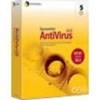Symantec 11281411 Administration Guide - Page 129
Adding an infection warning to an infected email message, All Tasks, Symantec AntiVirus
 |
UPC - 037648327237
View all Symantec 11281411 manuals
Add to My Manuals
Save this manual to your list of manuals |
Page 129 highlights
Scanning for viruses and other threats 129 Configuring scan options Computer: ACCTG-2 User: JSmith Action taken: Cleaned To display and customize a warning message on an infected computer 1 In the Symantec System Center console, right-click a server group, Symantec AntiVirus server, or client group, and then click All Tasks > Symantec AntiVirus > Client Auto-Protect Options. 2 In the Client Auto-Protect Options dialog box, click Display Message on infected Computer. 3 Do one of the following: ■ Click OK to accept the default message. ■ Click Message and customize the text, and then click OK. 4 Click OK until the Client Auto-Protect Options dialog box disappears. Adding an infection warning to an infected email message For supported email software, you can configure Auto-Protect to automatically insert a warning into the body of an infected email message. This type of warning can be important if Symantec AntiVirus is unable to clean the virus from the message, and if an infected attachment file is moved, left alone, deleted, or renamed. The warning message tells you which virus was found and explains the action that was taken. Symantec AntiVirus appends this text to the top of the email message that is associated with the infected attachment: Symantec AntiVirus found a virus in an attachment from [EmailSender]. For each infected file, the following information is also added to the email message: ■ Name of the file attachment ■ Name of the virus ■ Action taken (such as cleaned, moved to the Quarantine, deleted, or left alone) ■ File status (infected or not infected) You can customize the subject and body of the message. The email message contains a field called [EmailSender]. All fields in brackets contain variable information. You can customize the default message by rightclicking the body of the message and selecting a field to insert into the message.















